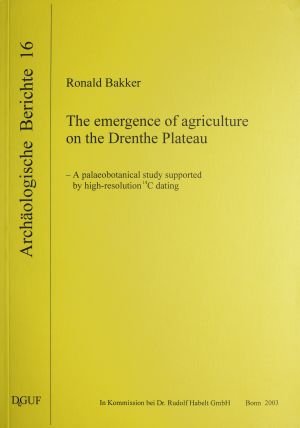
How to Cite
Published
The emergence of agriculture on the Drenthe Plateau
A palaeobotanical study supported by high-resolution 14C dating
Sediments from a pingo scar, a relic from the last glaciation, in the province of Drenthe (the Netherlands) are studied for their content of pollen and macroscopic remains. On the basis of nine pollen diagrams, the author reconstructs the vegetation from the Preboreal up till the present. Special attention is given to the beginning of the Neolithic, which marks the beginning of agriculture. A model is developed which describes changes in human-influenced pollen types during the Neolithic in pollen diagrams from Pleistocene areas near the North Sea coast.
The so-called Neolithic Occupation Period (NOP) is divided into three phases, which represent three different types of farming economy. By means of high-resolution 14C dating, the three phases are correlated with archaeological cultures. Phase NOP-1, characterized by small-scale arable farming and livestock foddering with leaves and twigs, is dated to 4050-3450 cal BC, which is in the period of the Swifterbant Culture. This shows that the first farmers on the Drenthe Plateau belonged to the Swifterbant Culture. Phase NOP-2, characterized by more large-scale, grass-based stock keeping, is connected with the Funnel Beaker Culture. Phase NOP-3, in which agriculture was concentrated in smaller areas, is contemporary with the Single Grave and Bell Beaker Cultures.






